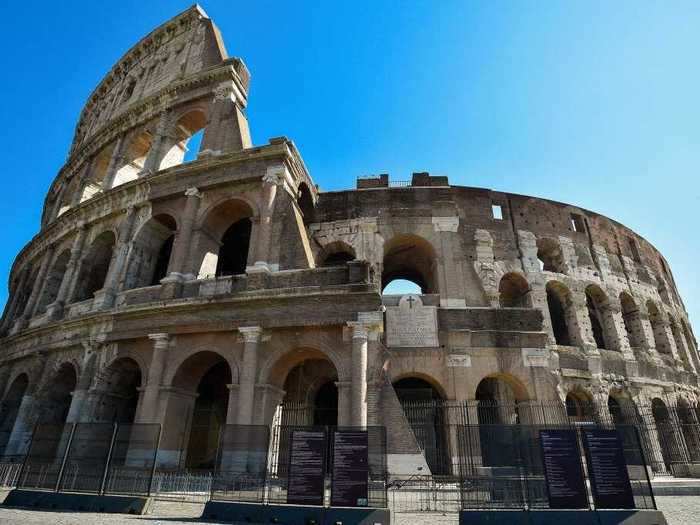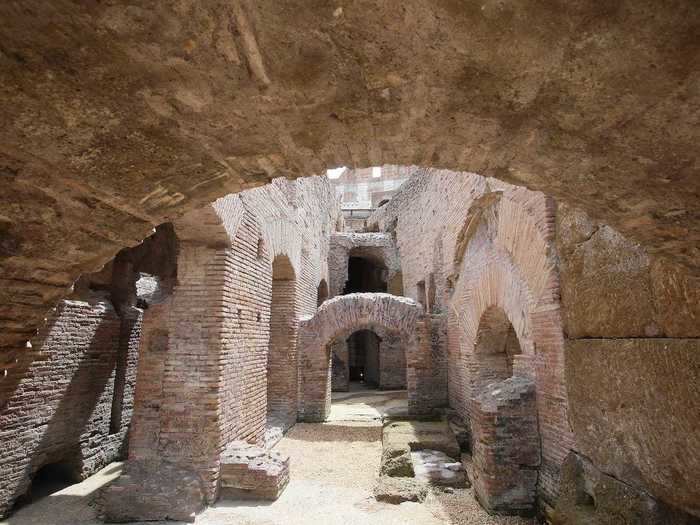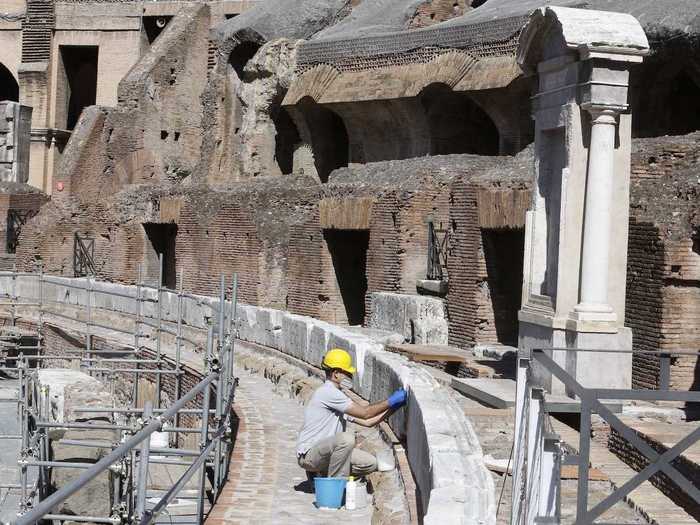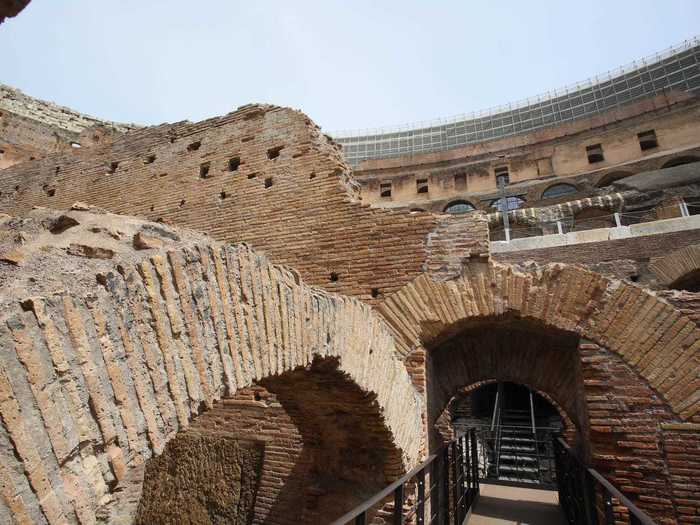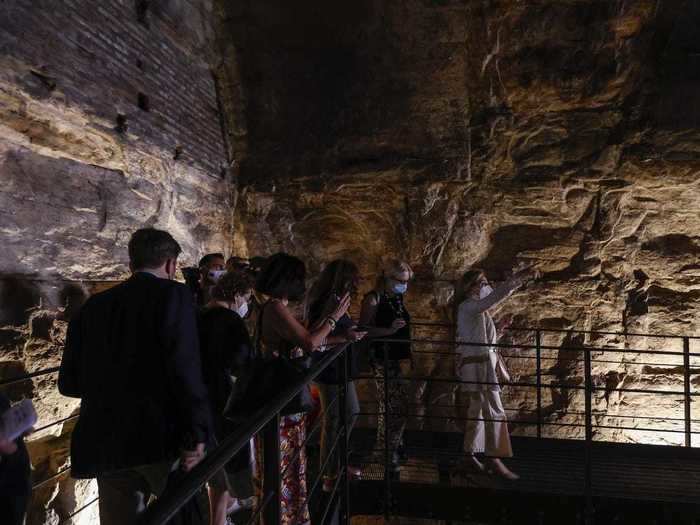For 2,000 years, the Colosseum in Rome could be explored from the interior and exterior of its walls. Meanwhile, the underground part of the arena was inaccessible.
The Colosseum pictured on March 19, 2020.
Marilla Sicilia/Archivio Marilla Sicilia/Mondadori Portfolio via Getty Images
The Flavian Amphitheatre, commonly known as the Colosseum, which is one of Italy's most famous landmarks, was built under Emperor Vespasian.
Construction began in 72 AD, and it took nearly eight years to finish the arena, which would be the world's largest amphitheater for more than 450 years, according to Artnet News.
As the Colosseum's purpose shifted from an arena to a tourist attraction, the hypogea — or labyrinth of tunnels that were once below the stage — were closed off.
The Colosseum's 7 million annual visitors could gaze down into the hypogea without ever stepping foot into the area.
That changed in June, when Italy's Ministry of Culture unveiled the restoration of the hypogea, or the "heart" of the Colosseum. Now, visitors can explore the previously closed-off area.
An overview image of the newly opened underground area of Rome's Colosseum.
Marco Ravagli/Barcroft Media/Getty Images
At a press conference on June 25, members of the media were able to walk through the hypogea, home to the previously unseen tunnels of the Colosseum, according to a Facebook post from the Colosseum Archaeological Park. The underground section has been open to the public since June 26.
The underground region served as the backstage for the action that happened on the Colosseum's stage.
A tunnel that's now accessible by the public inside the hypogea.
Marco Ravagli/Barcroft Media/Getty Images
The Colosseum held gladiator fights, hunts with wild animals, and even public executions, according to Artnet News.
The underground area served as the arena's backstage where gladiators and animals waited before heading into combat, according to CNN.
"This was the backstage of the shows that went on in the area. [It is the location for] all the preparation, even the technology -- they brought props, men and animals up into the area through a series of elevators and cargo lifts," Alfonsina Russo, director of the Colosseum Archaeological Park, told CNN.
When the Colosseum was first built, the hypogea was covered by a stage made of wood. This was later destroyed, and now sunlight shines into most of the area.
The 2,000-year-old walkways were once covered by a wooden stage.
Marco Ravagli/Barcroft Media/Getty Images
By the 20th century, weather, natural disasters like earthquakes, and vandalism destroyed the majority of the original Colosseum, according to the History Channel.
The stage was also destroyed during the Colosseum's 2,000-year history, according to the History Channel. Without a stage, visitors were able to look down into the labyrinth of tunnels and hallways.
Today, tourists can walk underground the structure where gladiators used to roam. A wooden platform was built that allows visitors to walk through the passageways and corridors of the Colosseum.
A person walks through the newly opened underground area of Rome's Colosseum.
Marco Ravagli/Barcroft Media/Getty Images
Nearly 525 feet of wooden walkways were installed into the hypogea, which allows visitors to walk where gladiators and animals awaited their battles, according to Artnet News.
The reveal of the hypogea is part of a decade-long project to restore the entire Colosseum.
A worker carries out restoration work at the Colosseum in June 2020.
Riccardo De Luca/Anadolu Agency/Getty Images
According to Artnet News, restoring the hypogea was one part of a three-phase restoration project.
The $29.8 million project was funded by the Italian fashion company Tod's. In 2018, a team of experts began restoring the hypogea, Artnet News reports.
The restoration of the 2,000-year-old hypogea involved washing away centuries of dirt, deposits, and microorganisms.
A team of experts spent more than three years restoring the area.
Marco Ravagli/Barcroft Media/Getty Images
According to CNN, to restore the area, a team of archaeologists, geologists, restorers, engineers, and architects used photographic surveys and surface mapping.
The goal of the new walkway is to allow historians, archaeologists, and the general public to walk into the landmark's past.
A group walks through the hypogea area of Rome's Colosseum.
Riccardo De Luca/Anadolu Agency/Getty Images
"Each stone here is a witness of everything that occurred under the great arena of the Colosseum, from its inauguration in AD 80 to its final performance in AD 523," Alfonsina Russo, director of the Colosseum and its archaeological park, said in a press event, according to Artnet News.

